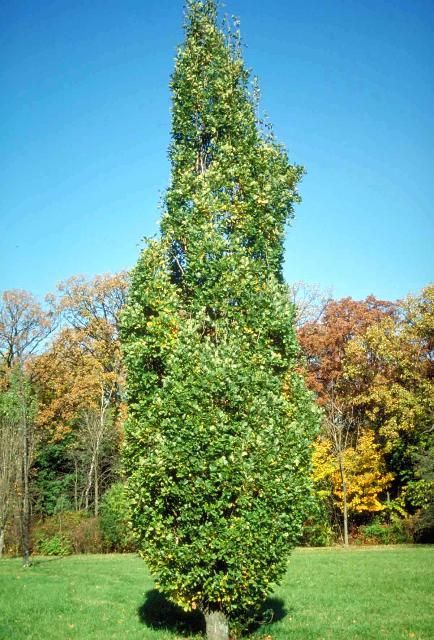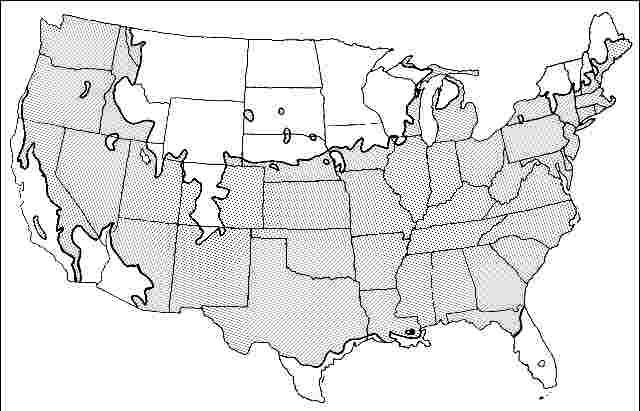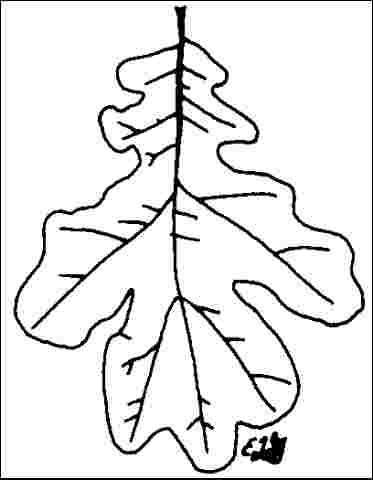Introduction
'Fastigiata' or upright English oak is an upright, columnar, deciduous tree which eventually matures into a dense elongated oval shape with a short trunk and makes a striking landscape specimen. Growing moderately-fast to 50 to 60 feet high and only 10 to 18 feet wide, upright English oak was first discovered growing wild in a forest in Germany and was propagated by grafting in 1783. The 2.5- to 5-inch-long by 1- to 2.5-inch-wide leaves maintain their dark green color throughout the year until they turn brown in autumn. They often remain on the tree for some time before dropping. The attractive, dark brown bark is deeply ridged and furrowed, and the one-inch acorns persist on the tree throughout the winter.

Credit: Ed Gilman, UF/IFAS
General Information
Scientific name: Quercus robur
Pronunciation: KWERK-us ROE-ber
Common name(s): 'Fastigiata' English oak
Family: Fagaceae
USDA hardiness zones: 5A through 8B (Fig. 2)
Origin: not native to North America
Invasive potential: invasive non-native
Uses: street without sidewalk; screen; specimen; sidewalk cutout (tree pit); tree lawn 4-6 feet wide; tree lawn > 6 ft wide; urban tolerant; highway median
Availability: not native to North America

Description
Height: 50 to 60 feet
Spread: 10 to 18 feet
Crown uniformity: symmetrical
Crown shape: columnar, upright/erect
Crown density: dense
Growth rate: moderate
Texture: medium
Foliage
Leaf arrangement: alternate (Fig. 3)
Leaf type: simple
Leaf margin: cleft, lobed
Leaf shape: obovate, oblong
Leaf venation: pinnate
Leaf type and persistence: deciduous
Leaf blade length: 2 to 4 inches, 4 to 8 inches
Leaf color: green
Fall color: copper
Fall characteristic: showy

Flower
Flower color: brown
Flower characteristics: not showy
Fruit
Fruit shape: oval, elongated
Fruit length: 1 to 3 inches
Fruit covering: dry or hard
Fruit color: brown
Fruit characteristics: attracts squirrels/mammals; not showy; fruit/leaves a litter problem
Trunk and Branches
Trunk/bark/branches: branches don't droop; not showy; typically one trunk; thorns
Pruning requirement: little required
Breakage: resistant
Current year twig color: reddish, brown
Current year twig thickness: medium
Wood specific gravity: unknown
Culture
Light requirement: full sun
Soil tolerances: sand; loam; clay; acidic; alkaline; well-drained
Drought tolerance: high
Aerosol salt tolerance: high
Other
Roots: not a problem
Winter interest: yes
Outstanding tree: yes
Ozone sensitivity: sensitive
Verticillium wilt susceptibility: resistant
Pest resistance: sensitive to pests/diseases
Use and Management
Upright English oak is useful in areas where there is not much room for lateral branch growth. The crown remains tight with no branches wandering away from the trunk. Some people object to the persistent brown leaves in the fall, but others like the tree for this trait. They have been used successfully for planting on 15- to 25-foot-centers along an entrance road to a commercial landscape and for downtown tree planting projects where soil space is extremely limited.
The tree should be grown in full sun on well-drained, acid or slightly alkaline soil. The tree is very tolerant of urban conditions, is adaptable and should be grown and used more. Few trees in the east are seen without powdery mildew. Locate in full-day sun to help reduce this problem. Trees in the drier climates in the mid-west probably are less affected by powdery mildew.
'Attention' also has an upright, columnar form and is reportedly mildew-resistant.
Propagation is by seed, although there is some seedling variation.
Pests
No pests are of major concern but occasionally bothered by gypsy moth and borers. There are many other potential problems.
Diseases
Some possible diseases are powdery mildew, oak wilt, anthracnose, cankers. There are many other potential problems.
